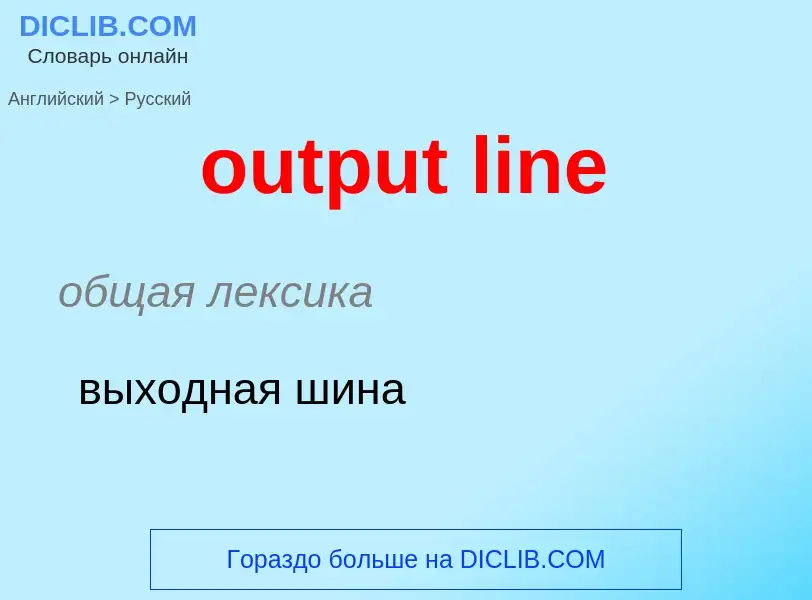Vertaling en analyse van woorden door kunstmatige intelligentie ChatGPT
Op deze pagina kunt u een gedetailleerde analyse krijgen van een woord of zin, geproduceerd met behulp van de beste kunstmatige intelligentietechnologie tot nu toe:
- hoe het woord wordt gebruikt
- gebruiksfrequentie
- het wordt vaker gebruikt in mondelinge of schriftelijke toespraken
- opties voor woordvertaling
- Gebruiksvoorbeelden (meerdere zinnen met vertaling)
- etymologie
output line - vertaling naar russisch
общая лексика
выходная шина
общая лексика
устройство вывода
электронное или электромеханическое устройство, соединённое с компьютером и используемое для отображения данных, выводимых из компьютера
Смотрите также
Definitie
Wikipedia
IS–LM model, or Hicks–Hansen model, is a two-dimensional macroeconomic tool that shows the relationship between interest rates and assets market (also known as real output in goods and services market plus money market). The intersection of the "investment–saving" (IS) and "liquidity preference–money supply" (LM) curves models "general equilibrium" where supposed simultaneous equilibria occur in both the goods and the asset markets. Yet two equivalent interpretations are possible: first, the IS–LM model explains changes in national income when the price level is fixed in the short-run; second, the IS–LM model shows why an aggregate demand curve can shift. Hence, this tool is sometimes used not only to analyse economic fluctuations but also to suggest potential levels for appropriate stabilisation policies.
The model was developed by John Hicks in 1937 and was later extended by Alvin Hansen, as a mathematical representation of Keynesian macroeconomic theory. Between the 1940s and mid-1970s, it was the leading framework of macroeconomic analysis. While it has been largely absent from macroeconomic research ever since, it is still a backbone conceptual introductory tool in many macroeconomics textbooks. By itself, the IS–LM model is used to study the short run when prices are fixed or sticky and no inflation is taken into consideration. But in practice the main role of the model is as a path to explain the AD–AS model.




![[[Colossal Cave Adventure]] being played on a [[VT100]] terminal [[Colossal Cave Adventure]] being played on a [[VT100]] terminal](https://commons.wikimedia.org/wiki/Special:FilePath/Colossal Cave Adventure on VT100 terminal.jpg?width=200)
-4.jpg?width=200)
![A pair of [[computer speaker]]s and a [[subwoofer]] used in a desktop environment A pair of [[computer speaker]]s and a [[subwoofer]] used in a desktop environment](https://commons.wikimedia.org/wiki/Special:FilePath/Creative T4 Wireless 2.1 Speakers.jpg?width=200)
![An [[LCD monitor]] in use An [[LCD monitor]] in use](https://commons.wikimedia.org/wiki/Special:FilePath/Ecran plat wikipedia.jpg?width=200)


